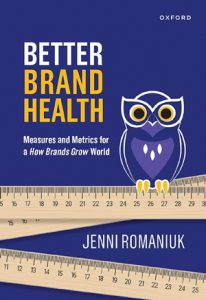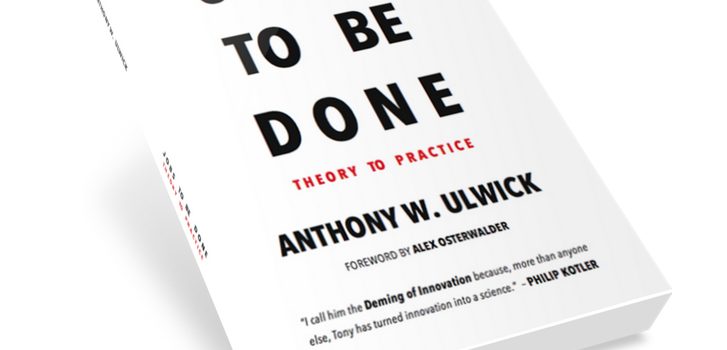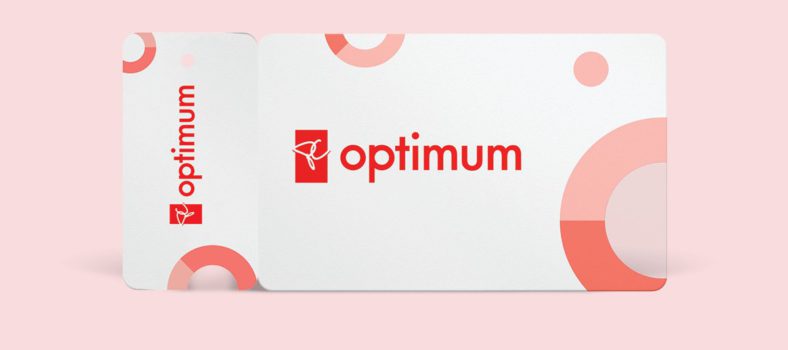Jenni Romaniuk is a lead researcher at the world-famous Ehrenberg-Bass Institute and the author of “Better Brand Health”.
 By Stephen Shaw
By Stephen Shaw
Why do people make the buying choices they do?
That simple question has preoccupied marketing researchers for more than half a century now. They’ve sought to understand what goes on in people’s minds as they make purchase decisions. Using scientific methods of discovery, they’ve probed people’s attitudes, values, habits, beliefs, social mores, motivations, personality quirks, cultural influences and more, looking for common patterns of behaviour that will predict how customers can be expected to respond in given buying situations.
The first breakthrough behavioural model to emerge was published in 1969 by John Howard and Jagdish Sheth in a book called “The Theory of Buyer Behavior”. It was, according to the authors, “an attempt to explain the brand choice behavior of the buyer.” Their model assumed that people are rational decision makers who move deliberately through progressive stages of the purchase process, guided by their past propensities, brand perceptions, and preferences. Their groundbreaking work laid the foundation for the elevation of consumer research into a recognized field of marketing study.
Today consumer behaviour research is an applied social science, incorporating theories of behavioural economics, social psychology and cultural anthropology. It has expanded our understanding of the complex interplay of factors that underly consumer buying decisions. And yet most marketers are almost completely oblivious to this body of scholarly research. They might be vaguely familiar with Maslow’s Hierarchy of Needs from their school days but that’s about the extent of their knowledge. Their world is tightly bound by the exigencies of campaign planning, product promotion and brand advertising. Research only ever enters their line of sight when they need a snapshot of brand health or some fresh insight into consumer trends.
So how is it that one of the most popular marketing books in recent history was penned by a market researcher? In 2010 Bryon Sharp, who heads up the Ehrenberg-Institute for Marketing Science at the University of South Australia, published a book called “How Brands Grow” which caught the attention of brand marketers everywhere. He introduced them in everyday lingo to a set of empirical generalizations (what he termed “Scientific Laws”) that completely upended many of their long-held assumptions about consumer behaviour. He urged marketers to focus on attracting light category buyers; showed them that greater loyalty amongst heavy users doesn’t necessarily translate into market success; claimed (controversially) that distinctiveness trumps differentiation – and, even more provocatively, that behaviour drives perception, not the other way around. In short he challenged much of conventional marketing wisdom.
 The book succeeded in making a convincing, fact-based argument for applying these “scientific laws” to brand building in today’s world of “polygamist consumers”. And now one of his longtime research associates, Jenni Romaniuk has come up with a book of her own, called “Better Brand Health”, explaining how to apply the Laws of Growth to brand health tracking. Tracking studies have always been a standard research tool for marketers keen to know what consumers think about their brand. The problem, according to Jenni Romaniuk, is that a typical tracking study doesn’t tell marketers what they really need to know about their brand: Is their brand consistently top-of-mind for buyers in all relevant buying situations? Is it readily available? Does it appeal to the widest market possible? In her book she lays out a formula for making brand health studies more useful– or as she prefers to call them, “category buyer memory” tracking.
The book succeeded in making a convincing, fact-based argument for applying these “scientific laws” to brand building in today’s world of “polygamist consumers”. And now one of his longtime research associates, Jenni Romaniuk has come up with a book of her own, called “Better Brand Health”, explaining how to apply the Laws of Growth to brand health tracking. Tracking studies have always been a standard research tool for marketers keen to know what consumers think about their brand. The problem, according to Jenni Romaniuk, is that a typical tracking study doesn’t tell marketers what they really need to know about their brand: Is their brand consistently top-of-mind for buyers in all relevant buying situations? Is it readily available? Does it appeal to the widest market possible? In her book she lays out a formula for making brand health studies more useful– or as she prefers to call them, “category buyer memory” tracking.
Stephen Shaw: Do you consider yourself a market researcher, a marketing researcher, or a marketing scientist? And what are the differences, if any?
Jenni Romaniuk: All of the above. Coincidentally, the difference between market research and marketing research was the audition question I was asked during my interview to join the Marketing Science Center(1) back in the early 90s.
A market researcher is someone who solves a specific problem at a point in time, measuring, say, the distinctive strength of brand assets, or identifying category entry points. Whereas the marketing researcher and marketing scientist are two of an ilk. A marketing researcher researches the phenomena of marketing – which is to say, they do the academic research.
The word “marketing science” has been co-opted in a whole heap of ways that are actually unhelpful. Econometric modelling is not classic science, but it is used in marketing to understand the relationship between variables. So it’s an approach to marketing research and market research, but it’s not necessarily scientific research.
SHAW: At the Ehrenberg-Bass Institute your focus is on the study of buying behaviour, is that right?
ROMANIUK: We believe marketing can be investigated through the scientific process of discovery, through empirical observation, by understanding the world around you, then seeking to explain it. You have to remember, marketing as a discipline is very young. We’ve only really been going for less than a century. With a lot of other sciences, like physics and biology and math, they’ve been going for millennia. So being young, we borrowed from other more mature disciplines. And you can see that in our terminology. When we talk about brand equity, we borrowed that from economics. When we talk about things like brand love, brand personality, attitude, we borrowed that from psychology. And now we’ve grown up a bit and going, well, why don’t we develop a marketing theory that comes from facts about how people buy and how brands compete? So not about psychological phenomena, not about economic phenomena, but about buying phenomena.
SHAW: You helped write the second edition of How Brands Grow. When the first edition was published it certainly caught the attention of marketers everywhere. Why do you think the book resonated so strongly with marketers at the time?
ROMANIUK: Well, it actually didn’t catch fire immediately. It was a slow burn before it took off. Gradually it got more and more popular. And I think partly because it is so grounded in facts. The beauty of Byron’s book was it laid the numbers out clear and bare for you to see, looking at things like the relationship between penetration and loyalty. Once you look at that, you can’t unsee it: there’s way more variation in penetration of brands than there is in the loyalty of those brands. So why is my plan saying I’m going to double the loyalty? And so I just think there’s a great power in the simple presentation of numbers, which is something that really we inherited from Andrew Ehrenberg (2), because that was one of his great superpowers, the clear communication of numbers: tell a story, to draw conclusions, to then be able to act upon it.
SHAW: One of the Institute’s trademark ideas is this notion of mental availability. Can you explain what it means and why it’s so important?
ROMANIUK: Mental availability is the thing that allows a brand to compete. It’s about your brand being easily thought of in buying situations, so that your brain just naturally considers it an option at a point in time. And then physical availability determines whether or not you’re the best option. For example, I just can’t be bothered walking 50 meters to buy your brand when there’s something here in front of me that will do the job just as well. The big reason why the vast majority of brands don’t get bought in any buying situation is they were not mentally available at the time. And a few of those brands weren’t good enough in the moment. So that’s why we cast it as a really big challenge that marketers are facing.
SHAW: Is it a binary state, my brand is mentally available or not?
ROMANIUK: Yes and no. In the short term, it is a binary: you’re retrieved or not. But over the long term, it’s a function of memory. Our memories do our work for us, and don’t just give us a list of every possible option. So if you’re thinking about lunch today, your brain doesn’t give you every single possible option you could have because it would be way too much information. You don’t need that. What your brain does is it will shortcut that to a couple of options that are going to be most suitable for you. And that’s going to be based on what we call category entry points. That might include how much time you’ve got, what you feel like eating, what the weather’s like outside, are you dining alone or with someone else. All of those things will intertwine to come up with the short list of what’s relevant today.
We’ll always go to our brains first because it’s the easiest search engine we’ve got. But over time, each time you’re buying lunch, different combinations of those category entry points will come into play. So tomorrow’s lunch will be different, next week’s lunch will be different, next month’s lunch will be different.
Over time, it’s about the probability that if I’ve got a restaurant in your area and I want you to come to lunch, that I get thought of. And the more situations I come up for, for as many people as possible, in as many different circumstances, the greater my chance of being bought more often. So in the long run, it’s a propensity because it’s made up of all of these context driven situations. And as a brand, what I’m trying to do is to attach myself to as many category entry points for as many people as possible in order to increase the probability that no matter what situation, my brand is one of the ones that your brain shortcuts to be suitable at the time.
SHAW: Your Institute is famous for puncturing popular marketing myths and pseudoscience. What’s the biggest myth you still encounter today?
ROMANIUK: They say science advances one death at a time. It’s hard for people to let go of ideas. It’s actually a sign of courage for someone to be able to admit, “I’ve learned something new”, particularly if you’re invested in it. If you’ve been teaching students that loyalty is important, to suddenly turn around and say, guess what, loyalty is not important, that takes a lot of courage to do, and not many people are willing to do it. So we’re constantly playing whack a mole.
I think the biggest one leading people astray is this idea of differentiation being essential for brand growth. There’s never been any evidence to support it. There’s lots of evidence to refute it, but yet – this is what I don’t understand – people are so wedded to an idea. It seems to be a bit more of a faith based argument rather than an evidence based argument. And it’s not the belief in differentiation that is the problem – it’s the actions to support that belief that become the problem. It leads you to do things that are ineffectual and potentially damaging for the brand in the long run, as well as the opportunity cost of the things you don’t do that would be good for growth. So that to me is one of the biggest, persistent areas of marketing faith that people just don’t seem to be willing to let go of. It’s just interesting to me that people are so wedded to this dogma without ever questioning it.
SHAW: Let’s say, just as a scenario, you’re a shopper in your local pharmacy, standing in front of the toothpaste shelves, wondering which brand to buy. What’s going through your mind as a shopper? How do you arrive at a buying choice?
ROMANIUK: There’s a whole heap of random thoughts that go through your brain at different points in time that lead you to pick one of the options on the shelf. The choices we make in store are a combination of stuff in our heads that’s been accumulated from our own experiences, advertising, observation of others, word of mouth. These all get processed in our brains and then we draw it out at different occasions to help us act in some way, shape or form. Maybe you saw an ad for Crest with whitening and enamel toughening. Great. And I might get that. But then I see that Colgate Optic White is on sale this week and has a promotion and I’ll just get that instead. I make that last minute decision while I’m there. But I would only do that if Colgate Optic White was something I had bought before. We’ve done research showing that price promotions don’t bring in new customers, they tend to just get people to repertoire shuffle. And so a lot of marketing’s job is to get the brain ready, get the memory ready, so that when people go into a buying situation, our brand is advantaged.
SHAW: Are people generally cognitive misers? How critical is it to reduce the cognitive load in a buying situation?
ROMANIUK: It’s not that people are cognitive misers. I mean, they are in that they don’t want to think a lot, but they still want to make good choices. So the thing is, what our brain often does, is it just gives us what it feels like are good choices, and they’re usually good enough so we don’t have to think. Now, sometimes we do agonize over a particular decision because it’s important to us for whatever reason. So we will do that when necessary. But, if it’s not needed, our brain can shortcut it for us and still give us a good outcome. If there’s an easier way to do it, we will take it.
SHAW: That’s my personal shopping mantra: Good enough! Let’s dive into the crux of your book, which is about brand health tracking, although you’re not particularly fussy about the term “brand health” – I think you prefer category memory tracking. Did you write the book because you felt you needed to set the record straight as to how to design a proper study?
ROMANIUK: A lot of brand health trackers are just not designed with the knowledge of how brands grow. They’ll say they track mental availability, but if you actually look at what they do, they don’t track mental availability. They’ve just rebadged one of their old measures as mental availability just to keep up. The divorce between the practical world and the academic world I think is most starkly seen when you look at what brand managers actually track in the real world. So it was a lot of discomfiture seeing that no one else in academia was solving the problem. And the big players who are making a lot of money out of brand health trackers were not solving the problem either. They were going off and creating their own measures because that’s what they felt would help them get selected as a supplier. They were trying to differentiate themselves and in the act of doing that created indices and labels for things that just really didn’t make sense.
SHAW: One of the declarative statements you make in your book is, “memories always matter”. And I know that’s an area of specialization for you. You also refer in the book to this concept of mental market share. I think one of the figures in the book, as I recall, is a brand is successful if it has something like a 60% association with the common category entry points. Can you just expand on this point?
ROMANIUK: So I give an example in the book of a winter’s night when my niece is over for dinner. There’s three different category entry points that come together when we are deciding on dinner. My niece doesn’t really like sushi, so count that out. It leads to things like burgers and fries because that’s what she likes. I don’t have them very often, so it’s a bit of a treat if she’s there. But then we wanted something that would get delivered. So that’s really how the various category entry points work together: they combine to give us a shortcut of all the food options that are out there. Category entry points identify the things that shape our memories.
SHAW: But the key ultimately is that a brand needs to be thought of in those moments, those specific category entry points.
ROMANIUK: If you’re known as a member of the category, that is, you serve food, then you have some chance of being retrieved and it’s about maximizing that chance as much as possible. So that’s the role of marketing is essentially to try and up that chance for you. Because category entry points are about buyers, they’re not about brands. But the brands get attached to them, which is what gives the brand a greater chance of being thought of when they’re relevant to people in buying situations. So category entry points would exist even if brands didn’t. So if any one brand went away, the category entry point would still be there.
SHAW: The key is that the marketer needs to take this into account to be certain that in the various possible contexts they have the best chances of being recalled as an option in those situations.
ROMANIUK: Yeah. A lot of our brand building activities are about building memories. So the question is, what memories are most useful to build given we’ve only got a short amount of time to do that? Because we only have a limited marketing budget. The buyer only has so much time that they’re going to give to us. So how do you not waste that effort? How do you get the most out of it? And so I would argue for getting the brand in the race for as many people as possible. I don’t know what other memory is more important than that.
SHAW: I guess brand experience also factors in to memory as well.
ROMANIUK: But you have to think of the brand to experience it.
SHAW: A somewhat contentious point of conversation is the whole concept of brand loyalty. You argue there’s no such thing as brand loyalty, that you see very little difference in loyalty as it relates to brand market share.
ROMANIUK: Loyalty is about how you act in a repeated way towards a brand. So buying the same brand again after you’ve already bought it, that’s a display of loyalty. It can be displayed in remaining a customer for a long period of time. That’s an example of tenure loyalty. It can also be defined by share loyalty: I might buy the category three times and I buy the same brand each time. So all of those are different ways in which loyalty can be exhibited and observed.
The idea of the traditional sort of relationship loyalty, of let’s get married until death do us part, that rarely exists in marketing. So, therefore it’s not a great metaphor for the sorts of behaviours that we want to encourage in buyers. Most people when given the opportunity will buy multiple brands. The more times you buy from a category, the bigger your brand repertoire is – a very well-established empirical generalization. And so it’s not that loyalty doesn’t exist: it’s just not something you can maximize to your own benefit. And efforts to try to do so will lead you making suboptimal choices and suboptimal use of resources.
SHAW: Like investing in loyalty programs.
ROMANIUK: Yeah. And I mean, Byron actually did one of the world’s first empirical studies into the effectiveness of loyalty programs – it was actually his PhD. And what he showed is that loyalty programs don’t engender loyalty, but they did provide a slight defensive mechanism to competitor activity.
SHAW: In other words they serve as a barrier to exit.
ROMANIUK: A little bit. Was it worth the justification of setting up the loyalty program? That’s a totally different conversation. Loyalty programs are a very expensive thing. But to say that loyalty programs engender loyalty, that’s where there’s scant evidence. And a lot of the early evidence was just done naively, going, oh, people in the loyalty program are more loyal than people who aren’t – without thinking about the selection effects. People more likely to join the loyalty program tend to be heavy buyers already.
SHAW: And I think you mentioned in the book that you view Net Promoter Score more as a customer satisfaction metric than anything.
ROMANIUK: It’s not my view, it’s actually the empirical evidence. When compared to customer satisfaction measures, it’s very highly correlated. NPS has cast itself as a word of mouth measure. It’s actually not a word of mouth measure – it’s actually a satisfaction measure dressed up. One of my colleagues, Professor John Dawes, has done a lot of work showing that it’s not a very robust measure. It’s too volatile to actually be useful.
SHAW: You also talk about “Share of Heart” being viewed by most marketers as the hallmark of success. You say that attitudes tend to follow behaviour. This is completely contrary to what most marketers believe. They hang their hats on creative campaigns that drive emotion.
ROMANIUK: The first thing to remember is, attitudes and emotions are different things. Attitudes are an overall evaluation of some things. Now, the thing about it is our evaluations typically happen post experience, because if we haven’t experienced something, how do we evaluate it? Emotions are the feelings that something generates from us. And there is actually evidence that emotions can be quite valuable for us. They help us process other information more deeply, such that it’s easier to retrieve at a later point in time. So emotions and attitudes have different roles to play. Attitudes come after we’ve evaluated something. The only time I can see that attitudes are particularly useful is if they stop you from doing something. If, for some reason, you develop a strong enough antipathy to something that it prevents you from acting upon it, even if it’s mentally available. But that rarely happens.
SHAW: Yet you can have brand fans who love a product. They have a strong attachment emotionally to a specific brand.
ROMANIUK: Yeah. No, don’t get me wrong, I’m sure every brand would love to have the devotion of Taylor Swift fans, but they don’t. John Dawes looked at whether brands that were considered love marks actually had any difference in the behaviour of their buyers than brands that were not considered love marks. And the answer was no, they did not. Every brand has a few people that love it, a few people that hate it, and most people think it’s just good enough to buy on occasion, and that’s fine, that’s all people need to be able to buy it. We don’t need deep emotions to buy brands. It’s a battle we don’t need to fight. This whole idea of brand love just doesn’t make sense.
SHAW: The other major point you argue is that brand growth isn’t so much about finding an optimal target market as it is about getting category light buyers to buy more.
ROMANIUK: The reason that light category buyers are important is because they’re the hard ones to attract. But if your advertising is noticed by light category buyers, chances are everyone else has noticed it too. They’re an indicator that you’ve done a really good job reaching people. So it’s not necessarily that the light category buyers are essential to growth: it’s that they’re an indicator you’ve done everything you need to do to grow. So the actual aim is to get more people buying in any time period. And if you focus on that, and the things that underpin that, you will as a consequence get more of your own buyers buying you more too, because they will have been affected by your marketing activity. It’s all in the service of expanding the size of your customer base because that’s the key path to growth. Remember, there’s not one penetration figure for a brand, there’s penetration within a time period. And that’s what we’re looking to maximize.
SHAW: And that’s ultimately what your Brand Health Tracking Survey is designed to answer: am I achieving brand growth or not?
ROMANIUK: But also, are there any barriers, either from what we’re doing or what competitors are doing, that are in the way of us achieving that. So it’s identifying opportunities, identifying threats, knowing that you’re in a competitive market, that you’re not operating in isolation. So keeping the actions that are working and improving on them and getting rid of the things that are not working.
- Based at the University of South Australia, the Ehrenberg-Bass Institute (formerly known as the Marketing Science Centre) is the world’s largest centre for scientific research into marketing.
- Andrew Ehrenberg was a statistician and marketing scientist who founded the Marketing Science Institute. His NBD-Dirichlet model of brand choice has been described as one of the most famous empirical generalisations in marketing.
Stephen Shaw is the Chief Strategy Officer of Kenna, a marketing solutions provider specializing in delivering a more unified customer experience. He is also the host of the Customer First Thinking podcast. Stephen can be reached via e-mail at sshaw@kenna.ca




